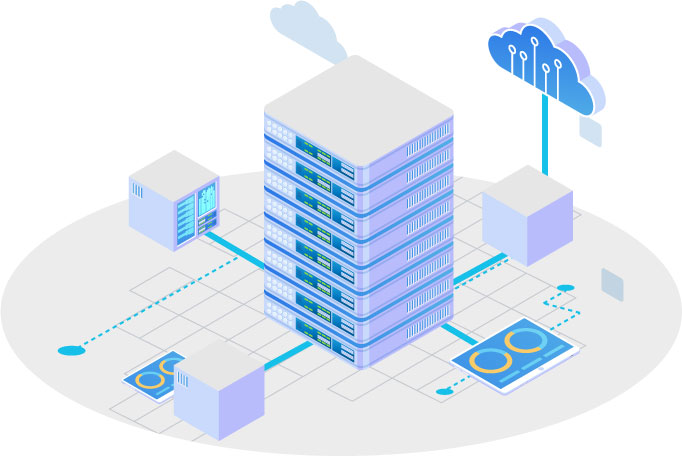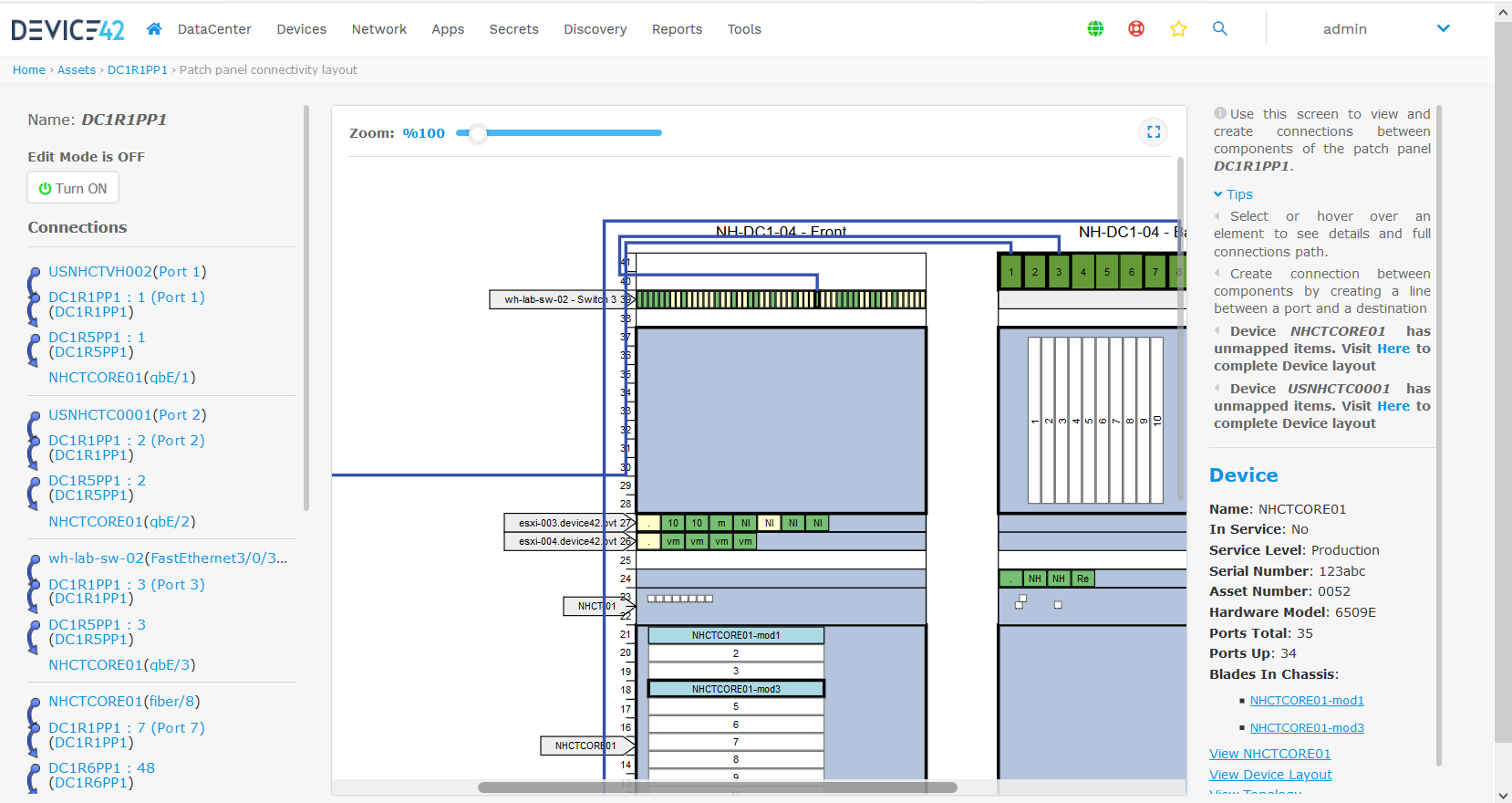
It wasn’t long ago that cloud computing seemed poised to eliminate physical data centers. Gartner predicted that by 2025, 80% of enterprises would shut down traditional data centers.
But more recent surveys show that data center footprints are actually growing. According to the AFCOM study, 58% of enterprises currently own between two and nine data centers. And the average number of data centers managed will increase 10.2 per organization over the next few years.
As data center complexity continues to increase, Data Center Infrastructure Management (DCIM) solutions must become essential tools in the IT stack. With the right tool, you can reduce costs, increase productivity, optimize your physical space, and improve system integration. But finding the right solution for your needs isn’t always easy.
The following 10 DCIM solutions should help you narrow your options to find a tool that fits your data center needs.
1. Device42

Device42 includes DCIM capabilities that provide powerful visualization tools, giving IT staff access to intelligent data center diagrams that accurately reflect their environments. With drag-and-drop features, you can map buildings, rooms, and individual racks visually. These features help you change rack orientations easily and use heat maps to understand availability at a glance.
The suite of software integrates DCIM capabilities with Automatic Discovery, CMDB, ITAM, IPAM, and more functionality to give you a more unified management solution for your complex data centers.
2. netTerrain DCIM
netTerrain focuses mainly on DCIM, which means this solution offers strong capabilities for managing aspects of your physical infrastructure—outside plant, site maps, cable management, etc. Known for being simple, customizable, and affordable, netTerrain DCIM is a good option for data center leaders who aren’t looking for additional products, such as CMDB, data center asset management, IT asset management, or application dependency mapping.
With netTerrain, you get a GIS-compatible tool with the basic DCIM capabilities you would expect from this category of IT solutions.
3. RackTables
RackTables is a data center and server room asset management solution that helps you document hardware assets, network addresses, space in racks, network configurations, and more. This open-source solution provides basic DCIM features you’d expect, such as documenting NAT rules, storing your load balancing configurations, attaching files to system objects, and assigning permissions for users—all without exhausting your budget.
Like most open source DCIM solutions, RackTables requires you to keep everything updated manually, minimizing your ability to streamline IT processes. And while the solution provides basic rack layouts, you’ll want a different solution if you need your DCIM solution to manage room layouts.
4. Nlyte DCIM
Nlyte’s Platinum DCIM allows you to effectively manage your physical and virtual compute infrastructure including data center, colocation, and edge deployments. Key features of this solution include asset lifecycle management, capacity planning, real-time data collection, automated workflow and change management, bi-directional systems integration, and audit/reporting.
While Nlyte DCIM has powerful capabilities, it doesn’t include auto-discovery and comes at the cost of a lengthy implementation cycle. With key customers like IBM and Cisco, you can be sure that Nlyte delivers key DCIM functionality in spite of these disadvantages.
5. ManageEngine AssetExplorer
ManageEngine AssetExplorer is a web based ITAM solution that helps you monitor and manage assets in your network from the Planning phase to the Disposal phase. While many companies use ManageEngine AssetExplorer as a replacement for DCIM tools, its capabilities are limited compared to other alternatives. Most notably, ManageEngine AssetExplorer doesn’t provide dependency maps, certificate discovery/management, barcode/QR code generation, power control, or multi-tenancy.
6. Sunbird DCIM
Sunbird DCIM is a leading solution data center solution that delivers 3D visualizations with real-time data, a weather radar for your data center, power and data connection mapping, detailed rack management, and minimal analytics configurations. When considering the auto-discovery features of Sunbird, remember that it relies on external tools that can add costs to your solution and increase time to implementation.
Combined with the fact that Sunbird DCIM deployments come with the expectation of high maintenance costs and higher TCO than other options, you have the weigh the pros and cons of paying higher prices for powerful functionality.
7. Lansweeper
Lansweeper is a cross-platform IT asset discovery solution that finds and gathers information on all assets, listing hardware specs, installed software, user details, and more. This kind of end-to-end visibility can help you save valuable time and resources within your IT organization. The main selling point of Lansweeper is its ability to discover any asset in your data centers without installing any software on them.
This DCIM solution is a strict IT inventory management tool. That means you don’t get a comprehensive CMDB that integrates with data center management or IP address management. If you consider Lansweeper, remember to plan for these external capabilities.
8. Vertiv Trellis DCIM
The Trellis Platform from Vertiv is a DCIM solution that provides a real-time, integrated view of IT and facility assets, making it easier to collaborate, plan, and control changes in your data center. The primary selling point for this tool is the visibility it provides while offering a simple modular, scalable platform for custom configurations. According to Vertiv, the main benefits that come along with this real-time visibility are high scalability, flexibility, advanced security, and increased time to market through a multi-tenant solution.
9. Schneider Electric EcoStruxure IT
EcoStruxure IT is cloud-enabled, vendor-neutral DCIM software that monitors your data center and IT locations. When you invest in this solution, you’re investing in easy scalability and secure visibility that supports remote monitoring. While the selling point of this solution is that it’s cloud-based, there are on-premises options for your monitoring, planning, and modeling needs.
10. openDCIM
openDCIM is a free, web based DCIM application that covers the majority of features needed by developers. While it doesn’t claim to be a function-by-function replacement for commercial DCIM tools, it is capable of creating layers for power, space, temperature, and weight capacity, mapping power connections across your locations, and recoding network connections to switches. If you only need the most basic DCIM capabilities, this could be a good open source (free) option. But if you need more advanced features that will streamline IT operations, you’ll want to upgrade to a more feature-rich commercial application.
Focusing on the 10 DCIM solutions discussed in this post will help you avoid the overwhelming amount of options in the market. You’ll notice that there’s a mixture of open source solutions, commercial solutions, and DCIM-adjacent solutions on this list. If you want a clearer comparison of features for such a wide range of options, check out this chart that provides an at-a-glance breakdown of different DCIM solutions. Or, if you want to get a more hands-on look at one DCIM option, click here for a free trial of the Device42 suite of software.



